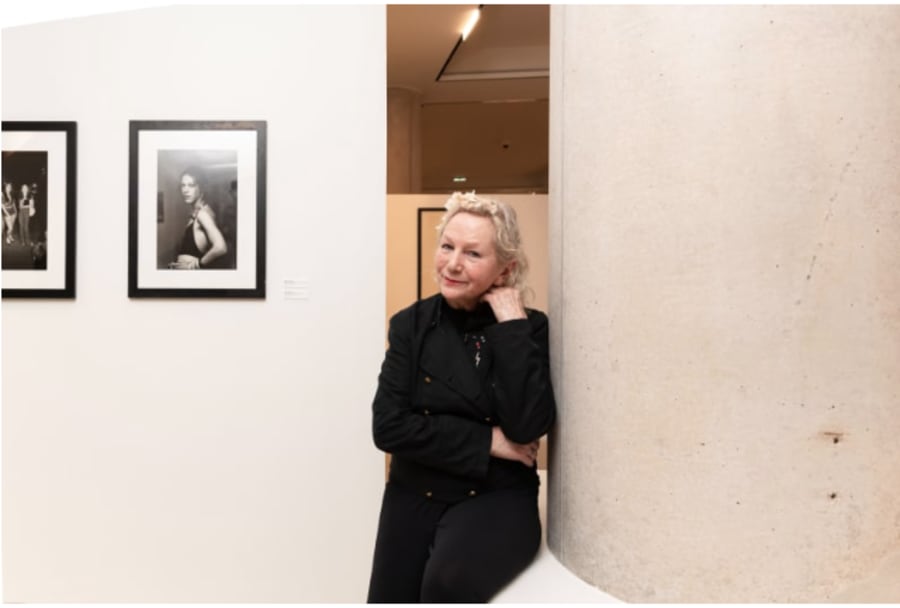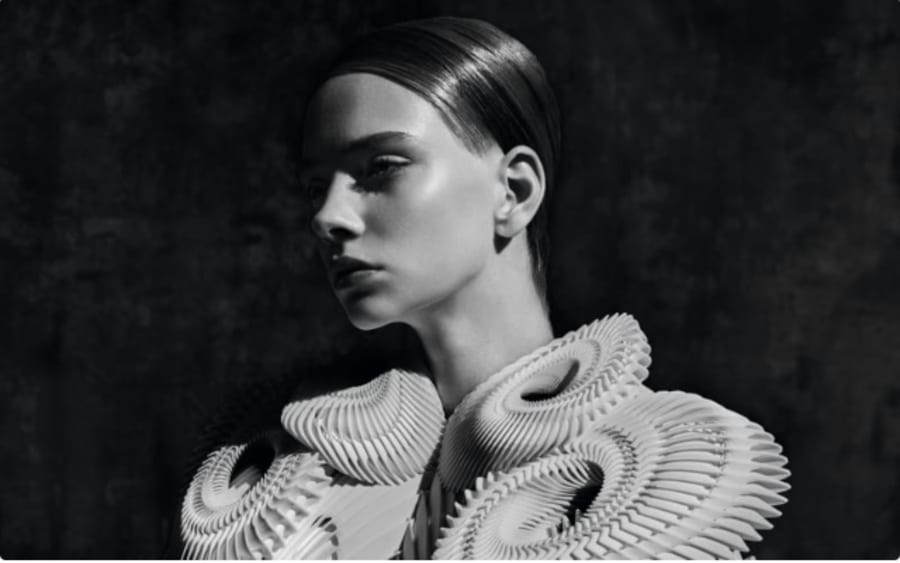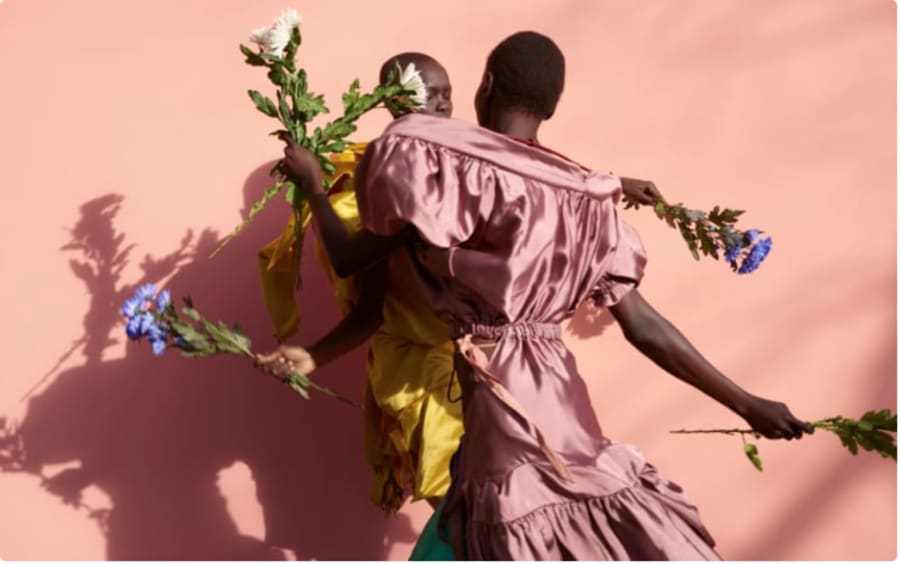For centuries, painters have taken creative liberties when depicting their sitters’ attire, whether for sheer visual impact or to imbue their works with symbolic significance. This phenomenon, in which the artist doubles as stylist, has been the subject of recent solo shows, including exhibitions on Gilded Age master, John Singer Sargent, and purveyor of contemporary cool, Barkley L. Hendricks. Today, a new generation of sartorially savvy artists are leading the charge, capturing clothing to stunning effect – but rather than merely painting fashion, these women consider style as a means to convey notions of heritage, pride, and power. We home in on three of them.
Born in Soweto, South Africa, Zandile Tshabalala, 25, vividly remembers her love of clothing and fashion shows, which she would explore by making paper dolls and later enrolling in modeling school. As a visual art student in college, ‘the inclusion of fashion in my paintings was almost like second nature,' the Johannesburg-based artist tells Art Basel. Tshabalala would scour thrift stores for leopard-print fur coats and zebra-striped mini dresses to wear in reference images for her paintings. Contrasting her figures’ deep complexions with bold colors and designs (much like one of her key inspirations, Kerry James Marshall), she hoped the striking visuals would ‘center Black women’ by giving them ‘a bold assertiveness when they held their gaze with the viewer.’ She continues, ‘I enjoyed this [process] deeply as it felt as if I was a child once again dressing up my figures in all kinds of garments… in a way I was creating as a designer would with their model.’
Tshabalala’s paintings would feel at home in any high-fashion glossy. Whether her figures are sprawled across a sofa or tucked away behind lush vegetation, tantalizing textures and sultry poses consistently command attention. More recently, Tshabalala has featured the creations of like-minded African fashion designers and friends, such as Thebe Magugu and Siyabonga Mtshali of Siyababa Atelier. She relishes wearing their garments, too: ‘I not only get to paint aspirationally, but I also get to insert these small joys into my everyday life.’
For Danielle Mckinney, 42, her figures’ attire is similarly an extension of her personal style. The Alabama-born, New Jersey-based artist tells Art Basel that she favors a luxurious minimalism, striving for the women in her portraits to exude ‘class and grace.’ ‘I want to make a woman feel like a woman,’ says Mckinney, who is especially drawn to the silky robes and kimonos of vintage screen sirens, as well as 1960s and 1970s clothing cut to accent the female figure. Mckinney also enjoys wearing and incorporating British label ME+EM’s timeless, flowy frocks into her art: ‘They remind me of my paintings when I put them on.’
Mckinney’s portraits emit a distinctive type of glamour where the heroine, nearly always in an equally enigmatic domestic space, is seen in a moment of repose or contemplation. The autumnal, jewel-toned palette makes the scenes appear lit as if by candlelight, adding to their cinematic quality. Even with her figures clad in nothing but self-assuredness, cherry-red lacquered nails lend a sense of chic nonchalance.
Mckinney is a trained photographer who turned to painting full time during the COVID-19 pandemic. Rather than working with a live model, she relies heavily on combining elements from static imagery, for example, a woman’s pose from one photo with the setting from another. Her process evokes Hendricks, who transformed his own street-style-esque photography into eye-catching portraits. Experiencing Hendricks’s work as a grad student was hugely formative, says McKinney: ‘With Barkley’s portraits, you weren’t just looking at a person – it was like he was bringing you into a moment.’ More recently, Mckinney has discovered the late Baltimore-based photographer Steven Cuffie, known for his intimate images of Black women during the 1970s.
Mckinney and Nairobi-born artist Wangari Mathenge, 51, both consider Henri Matisse deeply influential on their practices. Because she was not trained as a painter, Mckinney is guided by the legendary French artist’s philosophy of ‘painting what you feel in your spirit,’ as she describes. Mathenge, who splits her time between Nairobi and Chicago, is inspired by his patterning and layered interiors. ‘When I’m stuck, I look at Matisse, and I feel free,’ says the artist, who, like Mckinney, primarily situates her figures in domestic settings.
Mathenge is, however, hesitant to consider herself a painter of fashion: ‘I don’t watch runway shows. I don’t know what’s in season, but I do know I wear what I feel comfortable in.’ Despite her humble sartorial self-assessment, her eye for pattern is undeniable. ‘If I want a painting to be vibrant, I will think about print work. Especially if an item of clothing has a really beautiful or intricate print, I want to capture it.’
When Mathenge paints portraits, such as her ongoing ‘A Day of Rest’ series spotlighting domestic workers, she asks sitters to come as they are. ‘I do not feel that I have the liberty to change anything,’ she says, noting most of her work is an entirely different story. Anything is fair game to alter in order to create the most compelling composition. For example, in her 7-meter-wide painting Home Sweet Home (After Seurat, Manet and Pippin) (2023), a monumental, contemporized amalgamation of art historical tributes, only one of 12 figures (the woman holding an umbrella and facing the viewer) retained the print of her original dress – though the color, too, changed.
Typically, she or her partner serve as ‘stand-ins for a narrative… assuming a role like actors in a movie.’ She adds, ‘My work isn’t really about me. It’s about a woman who is in the diaspora who is similarly situated. I want the figures to be stand-ins for everyone.’ In her dynamic scenes, the purpose of diasporic material culture is twofold: a vehicle to deliver an ‘exploration of pattern and color’ and a physical manifestation of the ‘hybridity’ of Mathenge’s existence. Because Kenya was colonized by the British, the artist grew up around European-style interiors, and globalization, combined with her move to Chicago, further blurred cultural boundaries.
Ubiquitous in Kenya, colorful kanga and kikoi fabrics also feature in Mathenge’s paintings. Commonly tied around one’s waist to ‘protect your good clothing,’ these vividly patterned, rectangular cotton cloths gain new value in foreign contexts. ‘Many Kenyans use them to adorn their home to bring a little bit of your past into your present.’
Whether evocative of a painting’s mood or signifying one’s culture, clothing not only has a powerful presence in the work of Tshabalala, Mckinney, and Mathenge, it is also embedded with deeply personal and universal messages. ‘Fashion can bring so much meaning to the work,’ says Mckinney, ‘especially if people are looking for some answers with it.’
Zandile Tshabalala is represented by Galerie Nagel Draxler (Berlin, Cologne, Munich) and has also exhibited with ADA contemporary art gallery (Accra). Danielle Mckinney is represented by Marianne Boesky Gallery (New York, Aspen) and Galerie Max Hetzler (Berlin, Paris, London, Marfa). Wangari Mathenge is represented by Pippy Houldsworth Gallery (London) and and Roberts Projects (Los Angeles).
Stephanie Sporn is a New York-based author, specialized in the intersection between art and fashion.
Caption for top image: Danielle Mckinney, Evening Star (detail), 2024. Courtesy of the artist and Marianne Boesky Gallery.
Published on August 6, 2024.


